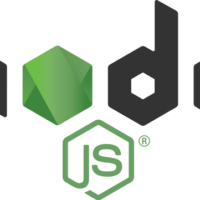Agile methodologies have become increasingly popular in software development due to their focus on iterative, flexible approaches to project management. As organizations look for ways to enhance their software development processes, many are turning to advanced software engineering or Agile as a way to increase productivity, improve collaboration, and increase customer satisfaction.
In the following paragraphs, we will grasp the approaches to include Agile into your software development process, as well as the benefits of Agile techniques, its essential elements, and its implementation challenges.
Advantages of Agile Methodologies
Agile methodologies offer several benefits for software development teams. One of the highlighting advantages of Agile is faster time to market. Because Agile focuses on delivering software in short, iterative cycles, teams can quickly respond to changing requirements and adapt their approach accordingly. This leads to improved efficiency, which ultimately results in faster time to market.
Agile methodologies also improve quality. Agile teams prioritize continuous testing, which allows for the early detection of defects and reduces the risk of releasing buggy software. Furthermore, Agile’s emphasis on collaboration and communication helps teams identify and address issues early on in the development process.
Agile methodologies also lead to greater customer satisfaction. By focusing on customer needs and delivering software in short cycles, teams can ensure that their work aligns with customer requirements. This results in higher levels of satisfaction and customer loyalty.
Another advantage of Agile methodologies is increased team collaboration. Agile methodologies promote cross-functional teams that work together to achieve project goals. This leads to increased collaboration, better communication, and higher levels of team morale.
Agile methodologies provide flexibility to changes. Because Agile prioritizes adapting to changing requirements, teams can easily accommodate changes in the project scope without sacrificing quality or increasing the timeline. A software development process, as a result, is more effective and efficient.
Key Components of Agile Methodologies
There are several key components of Agile methodologies that software development teams must understand in order to successfully implement Agile.
The Agile Manifesto is a foundational principle of Agile methodologies. It emphasizes the importance of individuals and interactions, deploying fully working software, customer collaboration, and responding to change.
The Scrum Framework is one of the most widely implemented and popular Agile frameworks. It is based on short, iterative cycles called sprints and includes roles such as Product Owner, Scrum Master, and Development Team. Scrum emphasizes collaboration, continuous improvement, and adapting to changing requirements.
The Kanban Method is another popular Agile framework that emphasizes visualizing the work, limiting work in progress, and optimizing flow. Kanban is often used in teams that work on a continuous flow of tasks rather than in sprints.
Extreme Programming (XP) is an Agile framework that emphasizes software engineering practices such as test-driven development, pair programming, and continuous integration. XP is focused on delivering high-quality software quickly and efficiently.
Challenges in Agile Implementation
While Agile methodologies offer many benefits, there are also challenges in Agile implementation. Some common challenges include resistance to change, lack of experience and expertise, inadequate training, and inadequate communication.
- Resistance to Change
One of the primary challenges of Agile implementation is resistance to change. This can occur when employees are accustomed to working in a traditional software development environment and are not accustomed to Agile practices. They may be resistant to changing their approach to development and may be skeptical of the benefits of Agile methodologies. It is important to educate and involve employees in the Agile implementation process and demonstrate the benefits of Agile methodologies through real-world examples.
- Lack of Experience and Expertise
Another challenge of Agile implementation is a lack of experience and expertise. Agile approaches call for a particular set of knowledge and abilities that the current team may not have. It may be necessary to hire new employees or provide training to existing employees to make sure that the team has the demanding skills and expertise to implement Agile methodologies successfully.
- Inadequate Training
Inadequate training is another common challenge in Agile implementation. Agile methodologies require a different approach to development, and it is essential that the team members receive adequate training to ensure they grasp and implement the new approach effectively. Training should be ongoing, and it should cover both the theoretical and practical aspects of Agile methodologies.
- Inadequate Communication
Agile techniques must succeed through effective communication. Inadequate communication can lead to misunderstandings and delays, which can negatively impact the project. It is essential to remove gaps, establish clear communication channels, and ensure that team members communicate effectively and regularly. Regular team meetings and status updates guarantee that every team member is aware of the updates and that the project is moving progressively as planned.
Implementing Agile Methodologies in Your Software Development Process
If you are interested in implementing agile methodologies in your software development process, there are several steps you can take to get started. Below given are some pointers to assist you in applying agile approaches in your organization:
- Define Your Goals and Objectives
Before you begin implementing agile methodologies in your software development process, it is essential to define your goals and objectives. Determine what you want to achieve by implementing agile methodologies and what specific benefits you hope to gain. By discovering your goals and objectives, you can develop a clear roadmap for implementing agile methodologies that align with your organization’s overall strategy.
- Choose an Agile Framework
There are multiple agile frameworks to choose from, including Scrum, Kanban, and Lean. Each framework contains a unique collection of principles, procedures, and methods that may be adjusted to fit the requirements of your company. Choose an agile framework that aligns with your organization’s culture and goals.
- Train Your Team
Agile methodologies require a different approach to software development than traditional methods. Your entire team will need to understand the principles, practices, and techniques associated with agile methodologies to be successful. Train your team to ensure that they understand the agile approach and can effectively apply it to your software development process.
- Establish Communication Channels
Effective communication is important for the success of an agile development process. Establish clear communication channels that allow your team to communicate effectively with stakeholders, end-users, and other team members. Encourage frequent communication and collaboration to ensure that everyone is working towards the same goals.
- Define Your Development Process
Define your software development process, including the specific stages, workflows, and deliverables. Align your development process with the agile framework you have chosen, and ensure that your team understands their roles and responsibilities at each stage of the development process.
- Implement Agile Practices
Implement agile practices such as sprint planning, daily stand-up meetings, and retrospectives to help your team stay focused and on track. Encourage your team to embrace agile practices and adapt them to suit your organization’s unique needs.
- Monitor and Adapt
Monitor your software development process and make adjustments as needed. Use metrics and feedback from stakeholders and end-users to continuously improve your development process and ensure that you are meeting your product and business goals and objectives.
The agile approach encourages self-organizing teams to manage their own workloads and communicate directly with stakeholders, resulting in a more flexible and efficient development process. Agile development is also ideal for projects that require frequent feedback from end-users or stakeholders, allowing teams to make changes quickly and deliver a product that meets customer requirements.
Conclusion
Implementing agile methodologies in your software development process can help you improve your development process’s efficiency, flexibility, and ability to meet your customers’ needs. By following the steps outlined in this article or through the Software Engineering courses, you can successfully implement agile methodologies in your organization and achieve your development goals. With the right approach, your team can work together more effectively, deliver products faster, and create products and services that meet the needs of your customers better.


















